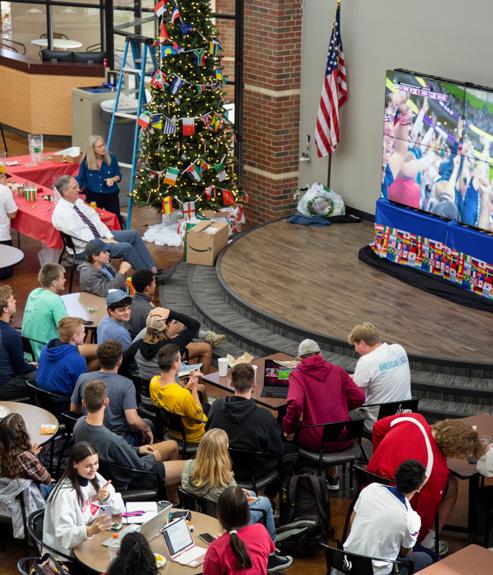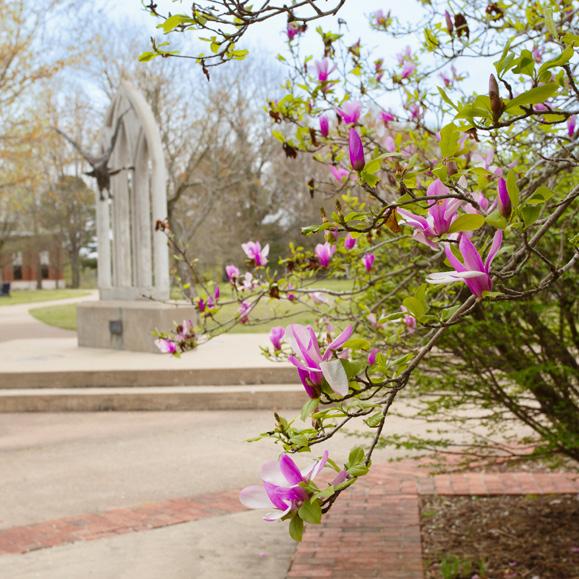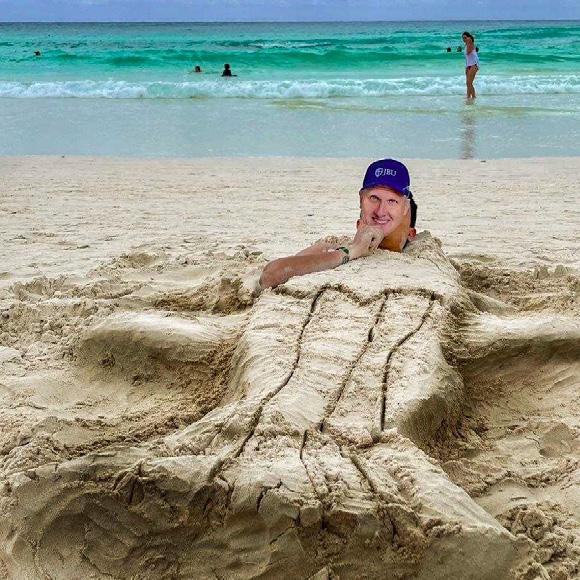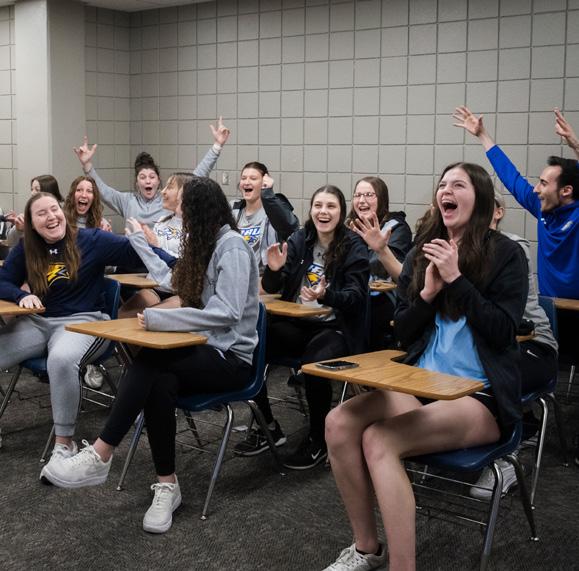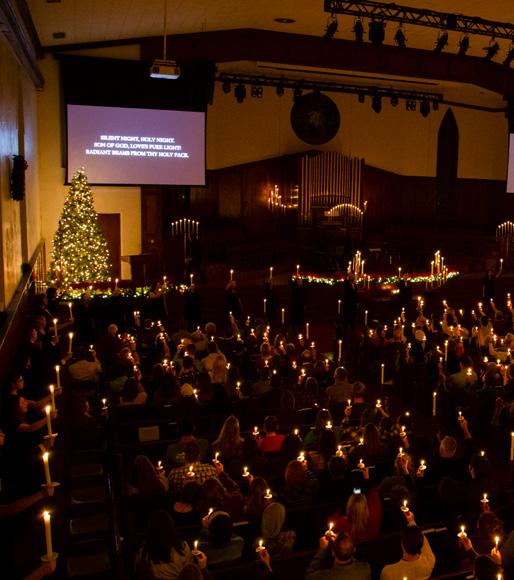
Summer Academy



Summer Academy

Summer camps for high school students
JBU’s Summer Academy is a weeklong, overnight campus experience for high school students. Our expert faculty have developed summer academy programs to o er students a week of college experience and the opportunity to test drive a major in a low-risk environment.
Choose from one of the following camps:
Music & Theatre
Pre-Medical Professions
Engineering
Computer Science
Cybersecurity
Criminal Justice
Game Design
JUNE 12–16
Registration is now open
jbu.edu/summer-academy
At JBU, we are committed to studying the sciences because we believe God has created the world and revealed himself in that creation. The beauty of the images of space returning from the Webb telescope suggests the beauty of God’s glory. The complexity and fragility of the human body deepen our understanding of the mystery and significance of Christ’s incarnation and our hope in the resurrection of the body. When we solve calculus problems innovatively and elegantly, we reflect the rationality and creativity of the God who created us in his image.
We have a strong tradition of excellent faculty in the sciences, including people such as Dr. Irvin Wills in biology (1934-1974), Dr. Roger Cox in mathematics (19361980), Dr. Dorothy Woodland in chemistry (1944-1974), Dr. Lee Netherton in chemistry (1969-2005), Dr. Larry Seward in biology (1970-2007), Dr. Jim Holiday in physics (1970-2008) and Dr. Cal Piston in mathematics (1982-2018).
JBU’s current science faculty members carry on that tradition of excellence, and their students’ achievements are evidence of the faculty’s commitment and quality. In this Brown Bulletin, you will learn more about Olivia Lawler, who is pursuing a Ph.D. in molecular biology at Stowers Institute in Kansas City and Brendan Williams, a Ph.D. student in neuroscience at the University of Texas at Dallas. They are just two examples of recent graduates pursuing advanced degrees. JBU science alumni have also made significant contributions to medicine. After his Duke residency and a Vanderbilt fellowship, Dr. Christopher Merrick serves as a pulmonologist at UCHealth Hospital in Colorado Springs and was a key hospital leader during the pandemic. Dr. Dan Yoder ’94 graduated from Duke Medical School and then enrolled in the No. 1 U.S. visual and retinal training program — Bascom Palmer Eye Institute. He is a board-certified vitreoretinal specialist and serves as a diplomat on the American Board of Ophthalmology. Dr. James Barnes ’05 served in Afghanistan as a major in the U.S. Air Force, after which he did a fellowship in sports medicine at UCLA. He was recently named the orthopedic surgeon for the U.S. Olympic team. All these alumni have fulfilled JBU’s mission to love God and serve others by excelling in the practical application of their scientific expertise.
JBU people have loved science because they love God, want to understand his world and want to serve others well. It is a posture of humility that encourages curiosity and devotion. As the Psalmist writes, “When I look at your heavens, the work of your fingers, the moon and the stars, which you have set in place, what is man that you are mindful of him, the son of man that you care for him?” (Psalm 8:3). May it always be true of us at JBU.
Godspeed,
 Dr. Charles W. Pollard President, John Brown University
Dr. Charles W. Pollard President, John Brown University

We believe God has created the world and revealed himself in that creation.
I have loved the ocean for as long as I can remember. There is something reassuring about watching the waves crash against the shore, the tides receding to reveal seashells and the sun sparkling across the surface of the ocean.
During difficult times, such as my brother’s death in 2017, I experience an almost indescribable craving to stand on the ocean shore. Unfortunately, we don’t live near the coast, so sometimes I’ll head to a lake which is an adequate alternative. Whether I sit on the shore or head out on a paddleboard, being near the water restores my soul and reminds me of God’s constant goodness and his love for me. Science was never my favorite subject. But you don’t have to be a science expert to be awed by the intricate design and complexity of every plant, animal, star and part of the human body. The older I get and the more I learn, the more I am stunned by the creativity of our creator. At every turn, creation shows off the majesty and complexity of the God who created our universe.
Whether sitting in a garden, hiking through the woods or getting out on the water, I encourage you to stop and marvel at the wonderous beauty our God has created and let it draw you closer to him.
Julie Gumm Chief Marketing and Communications Officer14
Integration of Faith and Science
Dedicated faculty, research opportunities and well-resourced labs help students see science through a Christian worldview.
19

Through high-end lab equipment, cadavers and professional programs, science majors are prepared for graduate school and the workforce.
22
Profesor, Students Use Fishing to Assess Health of Sager Creek
Biology professor Tim Wakefield and his students use electrofishing to research and establish a baseline of data for the health of Sager Creek and to equip other communities to pay equal attention to their natural water systems.
Two JBU alumni are using their doctoral studies to improve the treatment of autism spectrum disorder and Parkinson’s disease.

16
Marine Biology Alumnus
Lands on ‘Shark Week’
Gibbs Kuguru’s research on the genetics of various shark species has taken him worldwide, landing him a spot on Discovery Channel’s “Shark Week” and earning him the National Geographic Wayfinder Award.
Alumni explore innovations in AI and genetic testing to improve the fields of optometry and human performance.



Brown Bulletin Online: jbu.edu/bulletin
Facebook: facebook.com/johnbrownuniversity
Instagram: instagram.com/johnbrownuniversity
Twitter: twitter.com/johnbrownuniv
YouTube: youtube.com/johnbrownuniversity
Give Online: jbu.edu/giveonline
SPRING 2023
The Brown Bulletin is published by University Marketing & Communications for alumni and friends of JBU.
jbu.edu/bulletin
PRESIDENT
Dr. Chip Pollard
VICE PRESIDENT FOR ADVANCEMENT
Dr. Jim Krall
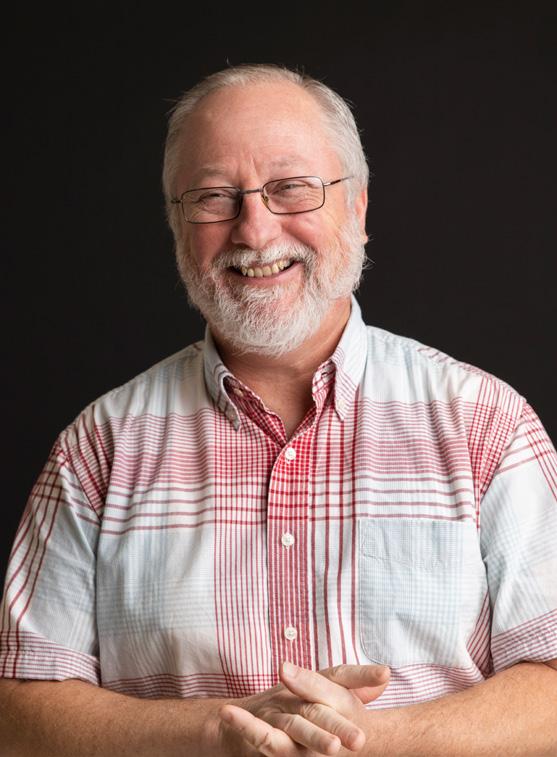
CHIEF MARKETING & COMMUNICATIONS OFFICER
Julie Gumm ’95 (B.S.) ’20 (M.S.)
MANAGING EDITOR AND ASSISTANT DIRECTOR OF UNIVERSITY MARKETING & COMMUNICATIONS

Jay Nickel
COVER DESIGN
Kelly Saunders ’12
LAYOUT DESIGN & ILLUSTRATION
Kelly Saunders ’12
CONTRIBUTING WRITERS
Tracy Balzer, Bethany Conley ’20, James Gilbert ’23, Julie Gumm ’95, Keith Jagger, Johanna Musgrave ’12, William Newton ’23, Jay Nickel, Nicholas Robinson, Carlson Wakefield ’20
CONTRIBUTING PHOTOGRAPHERS
Carter Henson ’17, Geoshan Lee ’23, Kelsey Moore ’26, Faith Roy ’26, Kelly Saunders ’12
SUPPORT
Sherry Miller ’75, Susan Newton ’85, Tim Wakefield, Qian (Angie) Wang
COPY EDITING

Johanna Musgrave ’12, William Newton ’23
Submit news items, story ideas, letters and corrections to jnickel@jbu.edu or via mail to:
Brown Bulletin
2000 W. University St. Siloam Springs, AR 72761
©2023 John Brown University
After a national search, JBU selected Ryan Ladner as the next vice president of enrollment management. Ladner, the current dean of the Soderquist College of Business, will succeed Don Crandall, who retired in May after 38 years of service. Ladner, who holds a doctorate in business administration, also becomes a member of the President’s Cabinet. With Ladner’s appointment, the enrollment teams for on-campus undergraduate, online undergraduate and graduate programs will be centralized under his leadership. 01
Beginning in fall of 2023, JBU will offer two new undergraduate degrees — game design and robotics and mechatronics engineering. JBU’s Bachelor of Science in Game Design students will study literature, creative writing and psychology, providing a solid foundation for designing effective and engaging video games and tabletop roleplaying games. The new robotics and mechatronics engineering program incorporates content from electrical
engineering, mechanical engineering and computer science and offers students real-world experience in collaborative engineering design and production.
Brad Gatlin, D.B.A., has been appointed the new dean of the Soderquist College of Business (SCOB), effective July 1. Gatlin joined JBU in 2016 and serves as the department chair for undergraduate business and associate dean of the SCOB. Gatlin will be assisted in his duties by Eva Fast, D.B.A., who was named associate dean. 02


The 2023 Faculty Excellence Award was given to Eva Fast, professor of marketing and innovation. Past students conveyed that Fasts’ classes and projects most closely resembled their current work with a Fortune 1 company. Fast engages student groups in national competitions, and she maintains a vast business network that provides valuable experiences and networking for her students. 10
Kathy Hogan, senior instructional designer, was given the Faculty Appreciation Award based on nominations by faculty. Hogan has been instrumental in helping faculty with course design inside the learning management system, including redesigning courses for an upgraded platform. 03

Sonya Price, director of advancement
services, received the Golden Eagle Excellence in Service Award, created to recognize a staff member who sets a worthy personal example, gives extra effort and gives other staff and/or students special encouragement. Price, who joined JBU in 2003, leads the team responsible for alumni, donor and scholarship data, advancement research and gift processing. 11
Don Crandall has served at JBU since 1985 as the director of enrollment management, then, beginning in 1993, the vice president of enrollment management. Crandall has led the enrollment teams in recruiting over 15,000 new and transfer students to JBU, approximately 50-60% of JBU’s total students. 04
Ed Ericson, Ph.D., joined JBU in 1994 as a history professor. He later served as department chair and dean of undergraduate studies until being appointed vice president of academic affairs in 2002. Ericson’s systems and academic innovation skills have contributed to JBU’s success and the development of new programs. Approximately 90% of JBU’s current faculty were hired under Ericson’s tenure. 05
Gary Oliver, Ph.D., came to JBU in 1998 to create a resource center to promote healthy relationships. Oliver served as the executive director of the Center for Healthy Relationships for 24 years. During his tenure, the CHR was awarded over $8.5 million
in grants and gifts and served over 34,000 people across the U.S. 06


Patty Kirk was hired in 1998 as an associate professor of English. Kirk worked hard to create a family of writers over her 25 years of service, conducting writing workshops in her classes. Several of her students have gone on to pursue master’s degrees in various fields. 07




Sue Daughtery was hired in 1998 and spent 25 years serving in financial aid, graduate admissions and the registrar’s office. Sue always put students first, making them feel valued and appreciated in every role she’s had. 08


Jan Lauderdale has been an integral part of the music department over her 18 years of service. Over her tenure as administrative assistant, she played a crucial role in the planning and execution of productions, Candlelight Services and choir tours both domestic and international. 09
In preparing for the 50th season of women’s athletics at John Brown University next year, all three women’s programs (soccer, volleyball and basketball) qualified for the NAIA National Championships – the first time in university history.
Bolstered by the program’s seventh 20-win season under head coach Ken Carver, the Golden Eagle volleyball program was welcomed to the NAIA National Championships for the first time in the team’s 49-year history. JBU posted a pair of victories over tournament-qualifying teams Ottawa University and eventual Elite Eight contestant
Columbia College. In Sooner Athletic Conference (SAC) play, JBU finished with a 14-6 record, highlighted by pushing then-undefeated Southwestern Assemblies of God University (29-0) to five sets. JBU then advanced to the SAC tournament semifinal round for the sixth time in nine seasons.
Armed with a 22-9 record, the Golden Eagles were selected to take on the nation’s No. 14 team, Bellevue University, in the NAIA National Championships Opening Round. JBU pushed the host Bruins to the brink twice before falling in straight sets, keeping the nation’s 12th-most-efficient offense largely at bay in the Golden Eagles’ first-ever showing at the national tournament. 05
Women’s soccer captured the program’s third consecutive and fifth overall SAC tournament crown and qualified for its ninth appearance in the NAIA National Championships.
Under head coach Kathleen Paulsen, Ph.D., the Golden Eagles have either appeared in the SAC tournament championships or qualified for the NAIA National Championships every year and have achieved both elite positions in six of Paulsen’s 10 seasons.
After defeating University of Science & Arts of Oklahoma 2-0 to win an SAC tournament championship match in Chickasha, JBU went to Williamsburg, Kentucky, to face Indiana Wesleyan University in the first round of the national tournament. Despite outshooting IWU by an 11-1 margin in the second half (19-9) overall, the Golden Eagles fell by a 3-0 final. The Golden Eagles finished the season 15-5-0, hitting 15 wins for the fifth time in the last seven seasons.

The JBU women’s basketball team was extended one of 26 at-large berths to qualify for its sixth-ever NAIA National Championships appearance – all under head coach Jeff Soderquist. Headlined by the SAC’s Player of the Year runner-up, Tarrah Stephens, the Golden Eagles hit the 20-win plateau for just the seventh time in program history.
The Golden Eagles began the season 6-0 in nonconference play and used an upset of No. 21 Texas Wesleyan University to jump-start a six-game winning streak in the second semester that saw JBU win 10
of its final 15 games of the regular season. With JBU returning to the national tournament for the first time in six seasons, the Golden Eagles were faced with taking on the nation’s No. 9 team, Loyola University, on its home court in New Orleans. JBU was up to the task, recording the first round’s largest upset with a 68-65 win over the Wolf Pack – ending Loyola’s 43-game home winning streak.
With the new format of all 236 NAIA institutions in one division, the Golden Eagles finished in the top 15% of all women’s basketball programs. 06
For the third consecutive season, a Golden Eagle won the Sooner Athletic Championship meet, this time captured by freshman Hope Ahnfeldt, a winning streak begun by SAC Champion Allika Pearson ’22.
Ahnfeldt, a three-time SAC Runner of the Week selection, turned in a time of 18:44, winning by a wide 12 seconds and set a new program record as the fastest time ever by a Golden Eagle freshman at the SAC Championships. While Hope won the meet, more JBU history was made when senior Emerson Turner crossed the finish line in 19:46 (6th place), qualifying a second female runner for the NAIA National Championship meet for the first time ever. Joining the tandem as All-Conference runners (top 15 in the meet) was freshman Liz Vazquez
– marking the first time JBU had produced three All-Conference finishes at the SAC meet.
Ahnfeldt went on to run a 5,000-meter time of 18:20 at the NAIA National Championships meet to finish in 47th place out of 326 runners. 07

Entering the spring sports season, JBU has already produced seven All-America student-athletes, led by second-teamer Tarrah Stephens (women’s basketball) and third-teamer Aubrey Mendez ’23 (women’s soccer). Lauren Cloud ’23 (volleyball), Savanna Riney (volleyball), Lauren Walter (women’s soccer), Ryan Winingham (women’s soccer) and Jacob Zamarron (men’s soccer) were all named All-America honorable mentions.
Celebrates 50 years in October
The Golden Eagles will celebrate 50 years of women’s athletics at JBU during Homecoming 2023. All former female student-athletes are welcomed to join a reception on Friday, Oct. 6 before the volleyball match at 6 p.m. inside Bill George Arena. The following morning, all former female student-athletes in attendance will be recognized before the women’s soccer match at 11 a.m. at Alumni Field.

Thelatest building project at JBU includes what might be one the smallest buildings JBU has erected this century, but it’s certainly essential. The days of waiting in long lines to use the restroom at Alumni Field will soon be forgotten.
The Champions Pavilion project, which broke ground in March and sits just south of the playing field, will include five stalls for both the men’s and women’s restrooms, a family restroom, a covered area with picnic tables and a wall to honor past players and program successes.

The project includes a new entrance and a six-foot wide, paved, ADA-accessible walkway from the parking lots to the field.
“Our current path down to Alumni Field is an uneven, grassy and rocky surface. As a result, supporters with mobility challenges struggle to get to the field,” said Robyn
Daugherty, director of athletics. “Grandparents, elderly fans, fans in wheelchairs and injured student-athletes have all made it known how difficult it is to get to Alumni Field.”
The project is timely as the JBU men’s and women’s soccer fanbase continues to grow with both afternoon and evening games becoming a rallying point for the community during the fall semester. It’s a family atmosphere that draws students, faculty, staff, parents, alumni and the local community. JBU also regularly hosts conference playoff games and NAIA national openinground games. These events draw 300-1,000 fans on a single date, so the Champions Pavilion project brings much-needed improvements.
To date, $253,000 of the $275,000 goal has been raised or pledged. To contribute to the project, visit jbu.edu/ champions.
Formost of us, COVID-19 interrupted our plans for the future in one way or another, and for Jaehee Jun ’23, the challenges were especially discouraging. Jun came to JBU from South Korea in August 2017, with plans to graduate in 2021. He initially enrolled in JBU’s prepharmacy program but later discovered his an affinity to the natural sciences and switched to biochemistry.

“One of the biggest attractions of the natural science department is the resources available for research: great instruments and advisers,” Jun said. “I especially enjoyed the chemistry labs where we had hands-on experience with professional laboratory instruments. I have gained confidence and skills in the laboratory setting that are so valuable for my future career options”
When JBU classes went online in March 2020 due to the pandemic, Jun felt the virtual coursework made his academic success more difficult. He decided to put his education on hold.
“After much contemplation, I decided that it would be wise to leave school and carry out my duty in military service in South Korea,” he said. “I was reluctant and disappointed as I did not want my academics to be interrupted and be behind most people by two years.”
Nevertheless, Jun’s experience at JBU prepared him for
his future career in science and military duty overseas.
“With my background in biochemistry, I was stationed at a chemical, biological, radioactive and nuclear unit working for the information/operation department for 18 months,” he said.
Jun always planned to return to JBU, but he said financial difficulties, visa complications and other factors sometimes made him lose hope. Jun shared that he would not have returned if not for the financial support he received through scholarships at JBU and God’s work in his life.
“All the problems with my visa, housing and financial issues were solved in the end, and it finally hit me when I got on the plane to the U.S. that God granted all that I needed,” Jun said.
Jun is grateful for the financial support and encouragement he received that gave him courage to persevere through uncertainty. Without financial aid, Jun would have been unable to complete his degree at JBU and pursue a master’s degree. But, Jun graduated on May 6 and plans to attend graduate school in the fall to advance his studies in the natural sciences.
“It is apparent that God has connected me to this place and these people for his good purpose,” he said.
February 2023 will become known in history as the month of Gen Z’s spiritual awakening. It was when God gave Asbury University students in Wilmore, Kentucky, a two-weeklong chapel service.
It began with a few students who felt a chapel service was not over. As they stayed on their knees in prayer, they ignited the interest of other students, and in a few days, believers from across the nation filled Asbury’s chapel to the brim.
When JBU students and hundreds of schools around the country noticed and described their own desires for a spiritual awakening, God seemed to say, “I am doing something new for your generation, meeting you in your anxiety and fears. But be patient; I am going to give you something that is uniquely for you.”
During a Tuesday chapel service at JBU, days after the Asbury revival broke out, we delivered a service devoted to scripture and prayer, planned months in advance. The timing seemed perfect. As the university’s chaplain, I prayed for revival at JBU that day in my frontrow seat. Expecting to witness an influx of students at the altar, I heard a stirring from God instead to sit still and be patient; don’t force anything. That Sunday night, at our weekly student-led worship service which usually ends at 10 p.m., a few students hungering for revival stayed and prayed until midnight, drawn by the parable of the virgins in Matthew 25 – stay awake and keep watch. But the droves of worshippers didn’t come, and God continued to say, “be still.”
Although some, including myself, had their eyes fixed on the red steps of the Cathedral of the Ozarks, looking for the movement of God’s Spirit, God wanted to spark his work elsewhere – in the campus’ townhouses.
Two nights later, God did just that. A group of studentathletes with no official student leadership titles gathered some friends in two townhomes for prayer and confession.
It started in the evening and went into the early morning. That meeting sparked a nightly worship gathering at the townhouses for the next two weeks. Student groups began organizing and praying all across campus. They met one evening, 100 students strong, worshipping in the Walker Student Center. These were all visible signs of an inward shift in the hearts of the student body. Students involved testify to increased spiritual conversations around campus and a palpable fervor in our chapel services.
Similar to the many outbreaks of spiritual awakening across the country, JBU’s students found themselves freed to express their faith more courageously than usual; student leaders found themselves drawn to a humility that broke down a myriad of barriers; and students in our close residential communities met one another for the first time, building a stronger community on campus. God gave JBU students a spiritual awakening, but it was more residential and more visible in our students’ social and relational fabric than something that gained national attention. This is something we celebrate. These revivals were not about celebrity but about exalting Jesus, gifting believers with true brokenness over sin and injustice and helping them know more deeply the profound grace of God, who longs to redeem it all. In this way, God not only used the faith of the Asbury students as a beacon for a pandemic-weary world in need of God’s touch, but also God used students across the country to lead their peers in a spiritually refreshing time, often in the wee hours of campus life.
If you speak to the students involved, they will tell you they haven’t stopped praying with expectation for God’s fire to keep burning in the JBU community and for spiritual revival across the Church far into the years ahead. I pray and suspect that the history books will talk about this, too – about the start of something which grew into lasting discipleship rooted deeply into the heart of God.
God gave JBU students a spiritual awakening, but it was more residential and more visible in our students’ social and relational fabric than something which gained national attention.
Becky Weimer, Ed.D., is one of the driving forces behind the academic success of countless students since her arrival in 2000 as the coordinator of disability services. She was instrumental in securing a grant to establish Student Support Services, of which she became director. Weimer was appointed as the registrar in 2007, managing thousands of student data records, course requirements and schedules, in order to ensure students fulfill their academic requirements. Serving as the dean of academic services since 2013, Weimer oversees the registrar, student support services, disability services and student success.

WHAT IS MOST REWARDING ABOUT YOUR ROLE?
I love seeing students meet their goals and earn their degrees. I have the great honor of working with staff across the university who provide academic services so we can support students. I am particularly excited when I see students who have struggled in some of their classes get the support they need to improve. Watching students walk across the stage at commencement is the highlight of every semester for me.
WHAT INFLUENCED YOU TO GET YOUR ED.D.?
I decided I needed to learn more about how all aspects of higher education worked so I could bring that knowledge to my position and help JBU become even better. One of the most essential things to serving students well is thinking institutionally because student success is about how the whole institution supports students.
HOW HAVE YOU SEEN THE REGISTRAR’S OFFICE EVOLVE DIGITALLY OVER THE LAST FEW YEARS?
During the pandemic, my staff worked with ITS to move most of our forms to a completely digital format. The new process helps students turn in forms in a timely manner and make life easier for our students and faculty. We also moved our scheduling and registration process entirely online. As students complete classes, the tool shows them what requirements are met and what still needs to be accomplished to graduate. Students still meet with their advisors, but they plan their classes in our online planning tool called Academic Planning and then register right there on the same screen with the click of one button. Students can plan out their entire degrees and make sure they will be able to complete their required hours, giving students more ownership over their progression toward their degrees.

One experience I hope students take with them is knowing they were cared for on our campus. I hope they saw and experienced God’s love through faculty, staff and other students. I hope they developed friendships that follow them throughout their lives and will support and sustain them when things are hard. And I hope from both of these things, they learn how to care for and support others. I hope students graduate understanding that there are a myriad of ways to show God’s love to the world. Yes, I want
them to use the knowledge and skills they learned in their areas of study, but most of all, I want them to show God’s love to others no matter where they land.
Being able to play a part in impacting God’s kingdom is my favorite thing about working at JBU. I have never worked in another place with as much buy-in to the mission as JBU. That mission focus allows me use my gifts to serve God by serving our students. They will, in turn, go out and serve others in our world, and my impact is multiplied over and over. I also love the people I serve alongside. I have worked with some absolutely fantastic faculty and staff. It is a joy to work with others who desire to glorify God by serving students. I truly have been blessed by the staff in the Registrar’s Office, Student Support Services, Disability Services, Student Success and the library who I have the honor of working alongside as the dean of academic services. I couldn’t ask for better people to walk alongside. Not everyone can say that they love the people they work with, but I can!
The first book that comes to my mind, outside of the Bible, is “To Kill a Mockingbird.” I read the book for the first time in high school and many times after as I taught it to students. I think the themes of this book are powerful, and they connect with how I want to live my life. One of those themes is that you never really know a person until you’ve walked in their shoes. This book helped me realize that I needed to learn about people by spending time with them, asking questions and truly listening to their answers and doing life with them. I learned to not just expect people to be like me. That has been a valuable life lesson for me, in both my work and also in my life in general.
I’m really a bit of a homebody when I’m not at work. I love to read and usually have two or three books going at once. My husband and I also enjoy watching movies. Since my kids are all grown now, I’d like to start cross-stitching again. I used to do that a lot before my kids’ activities took most of my free time. I also love to be with my family when I can. My kids are all really fun, and I enjoy spending time with them when we can.
FOOD FESTIVAL FUN : After spending hours in the kitchen, our students brought delicious treats to the annual International Food Festival for the JBU community.


What started with a single biology professor, Irvin Wills, Ph.D., in 1934, has grown into a robust science department. Now operating out of Bell Science Hall, the JBU science department has a track record of success: producing alumni who are neurologists, radiologists, dentists, general practitioners and more. Although the science department offers a diverse range

of courses from stream ecology to physics, the department’s primary focus lies within three major areas of study: biology, chemistry and the interdisciplinary field of biochemistry.
While courses are a vital part of each student’s education at JBU, students also participate in faculty research or conduct their own research projects under the guidance of experienced professors.
“When students are doing research, we found that all aspects of their education improved,” said Susan Newton ’85, Ph.D., department chair of chemistry. “Their grades, stature, presentation, dedication…it all improved. They’re more interested in their classes because they want to know how to apply what they’re learning to the problem they’re trying to solve.”
Many science majors are focused on careers in healthcare, which often involves additional education such as attending medical, dental or optometry school.
The research conducted within their undergraduate coursework provides a solid foundation for success and helps them become influential professionals in their respective healthcare fields.
“The research aspect of our programs is designed to give our students a good scientific background for what they pursue after college so our students can be effective in their pursuit of post-secondary education and professional careers,” said Tim Wakefield, Ph.D., department chair of biology.
Newton asserts that experienced, passionate professors make students excited to learn.
“When our faculty could work anywhere, each of us feels called to JBU and the students here,” said Newton.”
Part of that calling is the faculty’s faith, one of the key aspects that set JBU’s science department apart from other universities. While faith and science are often viewed as separate and incompatible areas of study, JBU professors emphasize that they aren’t different at all.
“Faith is looking at evidence to determine what things are that we can’t see,” Newton said. “Chemistry is finding the evidence for things we can’t see, so chemistry is a great training for our spiritual life.”
From the beginning, students are exposed to the integration of faith and science, as professors intentionally emphasize the interconnectedness of these two subjects throughout their coursework.

“I remember during my freshman year in plant and animal diversity when we discussed the different views of evolution within the Christian community,” said biology major Audrey Smith ’23. “I was just amazed that, contrary to what I had heard growing up, science did not have to be in conflict with faith. In fact, we glorify God by seeking him through what he has created.”
As scientific fields are ever-evolving, JBU professors are constantly exploring new technologies and incorporating them into their research and coursework in order to enhance students’ educational experiences and prepare them for their careers.
“Part of our goal is that every one of our chemists can walk into any lab and be comfortable because they’ve spent hours on every one of our instruments, because every one of these instruments is foundational to studying the world around us,” said Newton.
The science department at John Brown University has a rich history and an exciting future with professors and students engaged in significant research and innovative educational practices. By integrating faith and science, the department equips its graduates with the technical skills they need to succeed in their chosen fields and be salt and light for their peers.
To learn more about JBU’s science programs, visit www.jbu.edu/science.
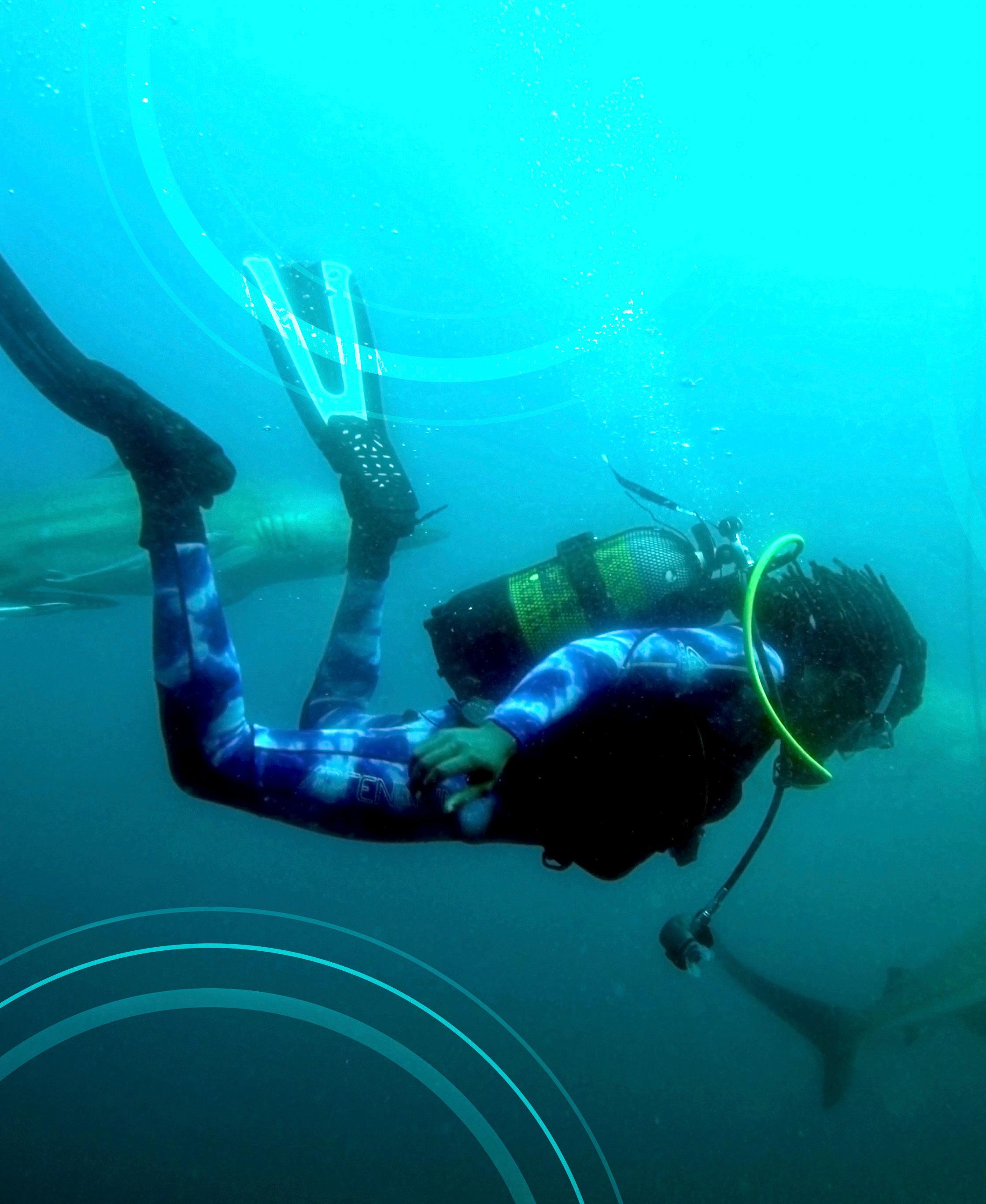
BeforeGibbs Kuguru ’12 was on Discovery Channel’s “Shark Week,” studying the genetics of black tipped reef sharks in the Maldives, he was a college freshman at John Brown University, on the path to becoming a doctor.

“I was in the pre-med program at JBU just going through the regular course work and realizing that, while it was interesting, it didn’t grab my attention or spark my creativity,” Kuguru said. “I was studying for the tests and doing the homework, but it was still just not clicking,” Kuguru said.
But when Kuguru’s program advisor Dr. Wakefield, professor of biology, suggested he explore marine biology, things started to click. In 2011, Kuguru took the marine biology course at JBU and found his passion.
“I loved it,” he said. “I loved the integration of knowledge and physical skill within the discipline; also diving with really cool marine animals didn’t hurt.”
But even after finishing the course, Kuguru still had questions.
“It all was really fun and interesting, but I didn’t know how I would apply it in the real world,” he said, “until Dr. Wakefield sent me a flyer for a shark diving internship in South Africa.”
At first, Kuguru was intimidated not only about working with such a formidable predator, but also by the physical demands of the internship.
“It was really scary. I didn’t know if it was going to be safe. I didn’t know if I could handle the physical component of working with great whites,” he said. “But I thought maybe this is the final lesson that I needed to be taught.”
Kuguru ended up living in South Africa for six years, working with a shark diving company and doing great white research in Mossel Bay.
Since then, Kuguru has traveled the globe, studying genetics in different species of sharks in the Maldives, South Africa, and currently The Netherlands where he is studying genomics at Wageningen University and Research.
His career path has been anything but easy, experiencing a “career low” when traveling to the Maldives for black tipped reef shark research in 2019. Kuguru had been tasked to film a segment for Discovery Channel’s “Shark Week,” a segment that garners over 20 million viewers over the seven-day period.

Even with a decade of shark research under his belt, Kuguru had never set up a research program by himself.
“It took me a while to organize everything, and the show starts filming,” he said. “I’m there with my gear ready to go, I’m waist deep in water with all of these sharks swimming around me. I throw my hook in the water and the sharks aren’t biting.”

Kuguru said that was one of the hardest moments of his life, because he had been studying sharks for 10 years and thought he knew the animals, but then they responded completely differently than he expected.
Kuguru called on his adaptability and resourcefulness and called in a friend who helped him change strategies.
“We had to change our method of fishing, and we were able to catch these sharks and really understand their conservation needs in an area that has been overfished for decades,” he said.
In 2022, Kuguru was recognized by National Geographic for excellence in his field. He was featured as one of 15 National Geographic Wayfinder Award recipients, an award that recognizes and elevates individuals who are leading a new age of exploration through science, education, conservation, technology and storytelling.
“I sort of see the Wayfinder Award as a recognition of time spent,” Kuguru said. “Everyone in my cohort that I met has spent 10 to 15 years honing their skills. The award is an injection of support so that we can continue to do what we’re already doing in a better way.”
Kuguru has been instrumental in his field, earning a master’s degree in genetics research on hammerheads at Stellenbosch University in South Africa and conducting first-of-their-kind experiments with great whites.
“To me, what’s important is telling the stories about these sharks,” Kuguru said. “They’re not one-dimensional man eaters, they’ve got personalities, they have preferences. It’s a whole array of things that we can learn about them. It almost feels limitless.”
While Kuguru has traveled all across the globe, he still carries memories and lessons he learned while in school at JBU.
“There’s this air on campus that your behavior and your actions — they really matter,” he said. “There’s this preparation for you to be the best kind of person you can be. My time at JBU taught me to be courteous and kind and considerate and prepared my character to survive in cultures that are incredibly varied.”
With over a decade of shark research, a Wayfinder Award and multiple appearances on national television, Kuguru says it’s still only the beginning.
“Nat Geo has just elevated my work,” he said. “But I see this as more of a starting point for me. It’s definitely not where the credits roll, more like the beginning of a chapter.”
JohnBrown University goes to great lengths to equip students for success through its hands-on educational philosophy and career preparation resources. For science majors, this includes providing the right equipment and lab resources for their learning experience.

Within the chemistry department, students have access to a range of foundational (and impressive) lab equipment on which they must show proficiency to graduate. Susan Newton ’85, Ph.D., professor of chemistry, explained that some of the machines allow students to identify the number of hydrogen and carbon atoms in a sample, check the molecular weight of molecules and separate compounds
from volatile solutions. By the time students graduate from the program, they are proficient enough with these machines to distinguish between the molecular compounds present in an unidentified substance and name it.
This amount of technical precision is rarely seen at an undergraduate level. This makes all the students in the chemistry program extremely hirable in both graduate settings and the workforce. Due to this, many students have an advantage finding work upon graduation from JBU.
Courtney Jensen ’22, a graduate student, teacher and chemistry lab manager, echoed this reporting that her JBU education will enable her to confidently pursue a
position teaching high school chemistry. Furthermore, Jensen spoke to the familial community of the science department. When Jensen faced a difficult health challenge, her professors supported her, reinforcing for Jenson that she was in a culture that valued her as an individual.
Another unique opportunity offered to JBU undergraduates is the cadaver lab on campus. The cadaver lab is primarily used by students in human anatomy or anatomy and physiology I and II, although other students, such as nursing majors, also fulfil course requirements in the lab. Dr. Tim Wakefield, professor of biology, explained that the science department receives the cadavers, or “tissue” as Wakefield refers to them, in mid-September, which are fully preserved using a formaldehyde-based solution to keep the tissue from decay. The cadavers provide an incredible opportunity for students to practically study the human body: blood vessels, muscles and internal organs are much easier to study when a student can actually see the tissue in question. Other methods, like dissecting fetal pigs, cats or plastic structures, — which are more typical educational tools for undergraduate students — pale in comparison to an actual body.
As one can imagine, there are several reactions to seeing a cadaver for the first time. Wakefield noted three – lightheadedness, nausea and existential crisis. Lightheadedness and nausea are easy to treat.
“I told [a student feeling nauseous], ‘go out to get some air, but you have to come back in because it’s a part of your class,’” Wakefield said.
A crisis of mortality is much harder to treat. According to Wakefield, most students experience some level of distress when they realize someday they will be just like the cadaver.
“When you look at a dead human body… you can’t help [but] realize ‘that will be me at some point in the future,’” Wakefield said.
Wakefield uses these moments to teach important spiritual truths, emphasizing to his students that the body is a temporal holding place for our immortal souls. Despite these initial reactions, students are always required to finish the lesson. Thankfully, most students are mentally prepared for the cadaver lesson and most are able to regain composure to complete their lab requirements.
Wakefield explained all the cadavers are donated by the anatomical gift program. Not only are all the cadavers previous Arkansas residents, but JBU staff and students are meticulously careful to save every bit of the cadaver so that JBU can return all the tissue to the anatomical gift program. This dissected tissue is cremated and offered to the cadaver’s loved ones.
Another way JBU equips students to study God’s great world is though the Pre-Healthcare Professions Program (PHPP). Joel Funk, Ph.D., associate professor of biology, explained the process of getting involved with the PHPP program. This program is for physicians, physicians assistant, dentists, veterinarians, optometrists, pharmacists, physical therapists, occupational therapists, public health workers, hospital administrators, osteopaths and many other health-related fields. The program is by no means a cakewalk but functions as a way to filter students who have what it takes to accomplish a medical degree from those who do not.
In this program, students are required to declare their intentions for the PHPP program by their sophomore year. Once they declare their interest in the program, they undergo a rigorous interview process. Funk said the reason for this interview is twofold. First and foremost, it is to see if the student has a strong reason to become involved in the healthcare system. Funk said this is a sort of softfail situation for the student, as sometimes students make it to their sophomore year without a clear reason why they are pursuing a healthcare career. It is important for students to thoughtfully establish a reason for pursuing a degree in healthcare because many medical schools are now requiring students to answer this question well before the school decides to accept them.
The second reason for the PHPP sophomore interview is to ask technical questions and evaulate the level of competency the student already possesses, then tailor a courselist specific to the student’s academic gaps.
JBU seeks to equip students to succeed and uses this interview to guide students to a path best-fitted for them.






Astudent respectfully leans into the open door of her professor’s office.
“Can you show us where the pancreas is on the cat?”
Such interruptions are not unusual for Biology Professor Tim Wakefield, Ph.D., but cat cadavers are not what capture his imagination. Instead, a substantial research project has engaged his curiosity for the last 15 years — the health of Sager Creek in Siloam Springs.
Siloam Springs is noted for its charm, and the creek that runs through downtown and snakes around the north side of campus is undoubtedly a contributor to the city’s character. However, most folks are unaware of how vulnerable the creek is to “anthropomorphic influence” — the materials washed or blown in from construction and traffic.
Wakefield has made it a goal of his research to accurately assess how the creek is affected by such influence. He and students in his biology research classes have found a way to assess the health of Sager Creek. Their approach seems logical — determine the condition of the creek’s fish, and you’ll gather enough data to determine the overall health of the stream they live in.

Locals are often seen with rod and reel in hand, fishing in the creek for bass and bluegill. These are just a few fish types Wakefield wants; his team is interested in studying all the different fish species living in the creek.
Mechanical means of capturing fish, such as nets, seines and traps, allowed Wakefield’s team to catch several fish species.
“There were some species that
“Several of my students are interested in careers involving environmental science.
Experience in surveying animal species — collecting, identifying, enumerating — will help them secure jobs...”
were missing from the survey that I knew were in the creek,” Wakefield said.
Wakefield turned to electrofishing using a Smith-Root LR-24 Backpack Electrofisher. This device safely and temporarily stuns the fish in the creek, causing them to float to the surface for collection and examination.
“The electric current is placed in the water by using an anode (positive) and a cathode (negative),” explained Wakefield. “The electric current flows between these two opposite electrodes using ions in the water to carry the current. When a fish is caught between these lines of current, it will be stunned, but usually not enough for it to be harmed.”
When the fish floats to the surface, students place the stunned fish in buckets of water. They then do their analysis – measuring, observing and recording their data before their subjects regain consciousness and are safely returned to the creek.



Why is this research so important? Wakefield uses an event from the recent past to explain.
A significant biological “upset” occurred at the Siloam Springs Wastewater Treatment Plant in September 2015. According to a report from the Arkansas Department of Environmental Quality, a local food production company had a power failure that resulted in the release of untreated wastewater into the Siloam plant. Due to extremely high organic waste levels, the plant could not successfully treat the water. As a result, the plant’s effluent (overflow) became anoxic, causing low oxygen levels that were fatal to over 30,000 fish in a five-mile stretch of Sager Creek.
More data is needed to say how well the fish populations have rebounded since the event. Wakefield’s research will help establish a more precise baseline of fish population data, a critical data set in the event of any future biological events.
“After several semesters of sampling, we should have sufficient data to make a fair comparison,” he said.
Wakefield’s Sager Creek research has resulted in three articles published in an academic journal, with more to come, including an article comparing mechanical fishing techniques to electrofishing.
“Several of my students are interested in careers involving environmental science,” said Wakefield. “Experience in surveying animal species — collecting, identifying, enumerating — will help them secure jobs in the field.”
The research will also equip other communities to pay equal attention to their natural water systems and ensure Sager Creek remains a safe place for families — and fish — to enjoy for years to come.
Williams ’20 has always been drawn to life’s deep and complex questions, so his choice to pursue a doctorate in systems and cellular neuroscience at the University of Texas at Dallas seems perfectly fitting. However, for Williams, studying neuroscience was a pivot in his original plans.
“When I first got to JBU, I had already mapped out how to be fluent in French and graduate with an international business degree and MBA in three years. My advisors were shocked,” Williams said, laughing.
But during his first semester, Williams developed a keen interest and empathy for people struggling with substance abuse and changed his major to family and human services.
It wasn’t until he studied neural circuitry of mood disorders in a lab led by Assistant Professor of Biology Qian (Angie) Wang, Ph.D., that Williams felt anchored.

“I suddenly saw this way of assessing the questions I had. It was really exciting,” Williams said.
Wang’s lab fueled his enthusiasm for neuroscience and became a critical launching pad for Williams’ current position. Under Wang’s supervision, Williams learned to present research, study animal behavior and slice and image the brain, among many other skills.
Williams joined the lab of Crystal Engineer, Ph.D., at UT Dallas in January 2022 to study the speech processing impairments seen in neurodevelopmental disorders, like autism spectrum disorder (ASD), in an effort to improve the efficacy of current therapies.

“For individuals with ASD, these impairments in processing speech sounds may be a function of developmentally altered brain structures,” Williams said. “When neural sound processing is even slightly altered, it can result in large cascading deficits in the brain’s ability to locate the source of a sound, to recognize a group of sounds as a word or to understand the semantics of a language.”
Alongside a team of researchers, Williams is working to reverse the neural deficits responsible for disordered auditory processing in a rodent model of ASD by exploring the use of sound-paired vagus nerve stimulation as a potential adjunctive therapy.
The end goal of the research is to improve therapeutic outcomes for individuals with ASD. Currently, the most widespread interventions are time-consuming, expensive and yield only modest improvements.
“I was drawn to the research because of the mechanistic training it would provide me and the potential impact of our discoveries on the lives of people with ASD and their caregivers. It’s important work,” Williams said.
Upon completing his doctorate, Williams plans to remain in academia, studying emerging therapeutic techniques at the intersection of neurobiology and psychology.

“Our life experiences influence our perceptions of reality, our psychology and our physiology. Neuroscience can teach us how, and even why, that happens.” Williams said. “Ultimately, I want to make discoveries that empower people to heal and thrive.”
Similarly, Olivia Lawler ’21, a predoctoral researcher at The Stowers Institute for Medical Research in Kansas City, Missouri, hopes to use her doctorate in biology to find a cure for Parkinson’s disease.
“My dad was diagnosed with early-onset Parkinson’s disease when I was two. I never knew life with my dad before Parkinson’s,” Lawler said.
However, Lawler didn’t always aspire to be a scientist. She assumed she would be an English teacher until she saw a centrifuge machine in ninth grade.
“I was inspired. I went home and thought, ‘I think this is something I could do. And, I might as well find the cure for Parkinson’s disease while I’m at it,’” Lawler said.
But until she completes her doctorate and starts her own lab, Lawler is studying the functions of proteins in longterm memory formation, specifically a protein named CPEB2.
“When people make memories, specific circuits in our brain are activated, and those connections need to remain strong to maintain those memories,” Lawler said. “In invertebrates, like fruit flies and snails, CPEB proteins form amyloid structures to maintain the memory connection over time. I’m exploring if CPEB2 functions
the same in vertebrates – like mice and humans.”
To answer this question, Lawler trains mice under an “inhibitory avoidance paradigm.” In the experiment, Lawler places a naive mouse in an enclosed chamber that is well-lit on one side and dark on the other. When the mouse – naturally light-averse – runs to the dark side of the chamber, Lawler initiates an electric foot shock and removes the mouse from the chamber. Lawler waits 48 hours to consolidate the memory of the foot shock and then retests the mouse.
“After 48 hours, I measure how much time it takes the mice to cross into the darkness – sometimes, even after 20 minutes, they stay in the light,” Lawler said. “While they are obviously agitated and stressed, the mice will behave this way even several weeks after the initial training, indicating that the memory remains strong enough to override their natural instincts.”
But to thoroughly evaluate the role of CPEB2, Lawler is in the process of snipping the CPEB2 gene out of the mice already trained in the paradigm. She hypothesizes that if CPEB2 is important for maintaining strong memories in vertebrates, then reducing the genetic expression of CPEB2 in the trained mice will weaken or eradicate the memory altogether.
While results are forthcoming, Lawler’s work to define the specific role of CPEB2 in memory formation could change how researchers view and interact with amyloid structures, which are currently considered toxic to the human brain.
“This study could be the first evidence for a vertebrate brain amyloid that has a helpful, nontoxic function,” Lawler said. “I think this is the most exciting aspect of my work.”
She credits her confidence in her postgraduate work to her training and experience at JBU. Like Williams, Lawler worked in Wang’s lab, where she first learned how to handle and dissect mice and write publication-style lab reports, skills she’s using daily in her current position at Stowers.
“My professors and coursework consistently challenged me beyond where I thought I could go,” Lawler said.
“I’m so grateful I am learning to become the researcher I imagined I could be in ninth grade.”
Whenpeople think of careers in healthcare, they typically think about becoming a nurse, doctor or radiologist. However, healthcare administration (HCA) is often called a “hidden career.” While not a medical professional, a healthcare administrator plays a vital role in smoothing the often-stressful environment of healthcare organizations.
Recognizing the projected 28% job growth in healthcare administration, JBU added an MBA concentration in 2019.
“Students pursuing an MBA with a healthcare administration concentration learn the skills necessary to effectively and efficiently lead, manage and oversee healthcare services, workers and facilities such as hospitals, private medical practices and nursing homes,” said Melanie Peddicord, director of graduate and online undergraduate business programs. “Obtaining the broad business skills offered in an MBA program can help potential employees stand out from others who have solely clinical healthcare experience.”
The MBA is offered entirely online to provide maximum flexibility for working professionalsworking professionals while also providing regular opportunities to meet with program faculty and classmates on projects throughout the program. Jon Grant ’21, operations manager for Arkansas Urology and alumnus of the program, affirms this.
“I found that the JBU MBA/HCA program provided a beneficial online learning platform that afforded me the same value as in-person instruction,” said Grant. “The flexibility and convenience allowed me to balance my academic pursuits with a full-time job without sacrificing the quality of my education.”
Grant had no difficulty in deciding to attend JBU to study healthcare administrationhealthcare administration, confident that the program would integrate naturally into his current schedule and elevate his capacity as a working professional. He specifically credits the program for three
distinct components that enhanced his experience in the program – diverse collaboration, fostering service-oriented mindsets and a people-centered approach to leadership.
While integrating faith can be more challenging in online coursework, faculty are fully committed to JBU’s Christ-centered education philosophy.
“We have to be intentional about it, but all faculty are committed to integrating their faith in their courses and are dedicated to the spiritual formation of their students,” Peddicord said.
Grant specifically admired the program’s emphasis on integrating servant leadership into the course load, initiated through faith integration workshops and discussions.
“I recall a class called healthcare law and ethics, in which our professor, Mark Bever, challenged us to engage in discussions on real legal cases from a variety of perspectives. This experience was eye-opening and demonstrated the nuance and complexity of the healthcare industry,” said Grant. “Bever consistently reminded us of our shared mission – to pursue Christ and to prioritize relationships over profits. I gained valuable insights on how to integrate my faith into my professional life and became a more compassionate and conscientious healthcare administrator.”
Bever is just one of the adjunct professors teaching in JBU graduate programs. Peddicord said that one of the advantages of the online format is bringing on talented adjunct instructors with business healthcare backgrounds to teach some of the courses.
Although a medical background is not necessary to pursue the degree, Peddicord said the MBA with a concentration in HCA complements a medical background for those medical professionals who wish to move into administrative or management roles within their organizations.
For more information, visit www.jbu.edu/mbahealthcare.
“[Our professor] consistently reminded us of our shared mission – to pursue Christ and to prioritize relationships over profits.”
Kuykendall ’19 studied business finance and earned minors in biology and chemistry at JBU. He was also a member of the men’s tennis team, helped lead worship in chapel bands and was a new student orientation director. Fortunately, Kuykendall’s ability to juggle multiple obligations at JBU translated to his life after graduation.
the American Optometric Association (AMO), the largest optometric student association in the country, and launched Eyedeal Innovations, an optometrical technology company.
Kuykendall is currently finishing his Doctor of Optometry degree at Northeastern State University in Tahlequah, Oklahoma – a four-year program that allowed him to bypass a master’s degree. Kuykendall credits JBU’s Pre-Health Professions Program, a program for students interested in attending medical school, for giving him the necessary experience to pursue his doctorate, especially with an undergraduate degree outside of the sciences. The program advised him in critical areas such as resumébuilding, acquiring shadowing hours with an optometry practice, developing his personal statement for graduate school applications and strategically selecting classes to prepare him for his future degree.
“[The Pre-Health Professions Program] provided me with all the tools that I needed to give me a competitive application for my doctoral program,” Kuykendall said. “It was probably the single most beneficial tool within the science program, along with the classes. The professors were also very helpful and flexible, as I was in a unique situation of studying business and science. They were accommodating to enable me take the classes I needed to graduate on time.”
Since being in the doctoral program, Kuykendall has kept himself busy – he recently got married and has started a family; served as the vice president of
“A team and I started a technology company that is basically an artificial intelligence program [called MAXWELL: Retinal Assessment] that identifies pathology in retinal fundus photos, which are photos of the back of the eye,” Kuykendall said. “It’s been very exciting, and we are looking forward to seeing what comes of it.”
Although Eyedeal Innovations officially started in 2023, the idea was created and presented a year prior at the 2022 AMO’s Bright Eyes Pitch Competition, an international business competition in San Diego, California, where the concept was a top 5 finalist.
In the midst of all of his responsibilities, Kuykendall has very clear plans for his future. After he concludes his externship and graduates from NSU, Kuykendall will become a full-time optometrist with Eye Care of Claremore, a familyowned practice.
“I’m going into practice with my dad, who is also an optometrist, and we have some hopes of growing his clinic to offer neighnoring communities easier access vision care,” he said. “I also love technology, so I would love to see the company that we are starting continue to blossom and generate traction in these next few years.”
Overall, Kuykendall finds the most rewarding aspect of his work to be his ability to serve others, rather than in an optometry office or through his technology company.
“I just want to help patients make the most of their vision so they can make the most of their lives.”

DanielGuzman ’18 did not expect to study at John Brown University. Growing up in California’s Santa Clarita Valley, Guzman attended Westmont College in Santa Barbara, California, majoring in kinesiology and minoring in economics and business. During his four years at Westmont, Guzman was a prominent men’s varsity soccer team member. After graduation, Guzman pursued a master’s degree in organizational leadership at JBU.
“I appreciated the Christian liberal arts education at Westmont. I worked as a professional strength-conditioning coach with pro soccer, and I had learned so much of my craft already on the ground floor that I didn’t want to go deeper into strength conditioning,” Guzman said. “Instead, I wanted to learn how to grow, both as a person and as a teammate for my organization, and I thought studying leadership was the way [to do it]. So I talked with my pastor, who was looking for a similar experience, and that’s how we both got connected to JBU.”
Since earning his master’s in 2018, Guzman has applied his degrees in many different areas. Over 10 years, he has been a strength-training coach for various California-based athletic organizations, including LA Galaxy, the LA Football Club, EXOS, the U.S. Soccer Federation and the self-started Guzman Performances. He worked with athletes from all sports but mainly focused on soccer players, including Robbie Keane, Stephen Gerard, Ashley Cole and Christian Pulisic.


In November 2022, Guzman decided to switch gears and began working for 3X4 Genetics, a company that powers GENEFIT, which Guzman describes as the world’s first human optimization software. GENEFIT performs intricate genetic testing, allowing people to see just how substances such as caffeine and gluten can affect their bodies. This information can then be given to a trainer or dietitian to help a person recover from an injury or a health complication much more efficiently.
“The world of genetics is a huge opportunity because in pro sports very few teams look at genetics, let alone know how to quantify it. So, I’m taking my background in strength conditioning and human performance and using it to quantify sports training,” Guzman said. “We’re learning what our clients’ genetic insights tell us, and from there, we can apply training methods in a much more specific model.”
Guzman deals more with the physical side of recovery. He uses the information that GENEFIT provides for his clients to create an intricate strength training regimen to efficiently accomplish his clients’ goals.
Going forward, Guzman’s primary plan is to continue committing his life to God daily.
“If I can stay committed to God’s purpose for my life, then wherever that takes me in the next year, five years, that’s what I want to do,” he said.


Amber (Schmidt) Waldeier ’97 created the product Zipplicity Un-Luggage, a zippered, packable neck pillow for travel storage and comfort. The utility patent was granted in August, fulfilling her lifelong dream. Zipplicity donates packs to foster and adoptive care families. 01

Richard Welch ’09 successfully thru-hiked (southbound) the 2,190 miles of the Appalachian Trail, June through November on the trail name Alpine. He is one of the very few of his age (fewer than 20 over age 65) on record to have successfully thru-hiked SOBO since the early 1990s when they started keeping records.

Sam Deck ’20 ’22 and Averee (Gumm) Deck ’21 were united in marriage on Jan. 06 in Bentonville, Arkansas.

Elizabeth Flora-Swick ’16 published a book titled “Undefiled Access: Healing the Worldview Divide between Charismatic Christianity and the Disability Community.” What began in 2021 as a few chapters addressing problems in Christian healing practice, transformed into a 275-page book, attempting to heal the worldview friction between disabled people and charismatic/Pentecostal Christians in Western culture. 04

Jeremiah Moore ’16 and Tyler Dees ’16 were both elected to the Arkansas State Legislature in November. Dees won his election to represent Senate District 35, and Moore won his election to represent House District 61. Moore 05 Dees 06

Gene A. White Jr. ’19 started a new position as associate dean in the School of Business & Industry at Odessa College in January and recently defended his dissertation for an Ed.D. in educational leadership at Maryville University.

Stephen ’90 and Ann Page ’88 Zupke launched into full-time ministry as “pastors to missionaries” with International Messengers, serving God’s children. They said raising 11 children was their proving/training ground and now are ready to bring the father’s heart to God’s ministers in Eastern Europe and the Middle East.
Be featured in the Brown Bulletin! Submit your professional and family news to jbu.edu/alumni/magazine/news/.
Jay Ballard ’70, age 75, died Dec. 2. (Electrical Engineering)

Wayne Berggren ’60, age 84, died Dec. 31. (Radio Production)
John Berwick ’52, age 92, died Feb. 18. (Mechanical Concentration)
Bill Bond ’70, age 74, died Oct. 12. (Physical Ed & Health)
Marlin Brallier, age 89, died Feb. 6.
Louise Kincaid Randolph Brown, age 77, died Feb. 2.

Kevin Kenneth Stephen Canfield, age 70, died Nov. 23.
Theodore Allan Danley ’71, age 72, died Nov. 21. (Engineering)
Kenneth “Kent” Lawrence Douglas, age 60, died Oct. 23.

Rebekah Ann Durham ’96, age 49, died Nov. 23. (Elementary Education)

Raymond Carl Forester ’84, age 60, died Dec. 26. (Broadcasting)
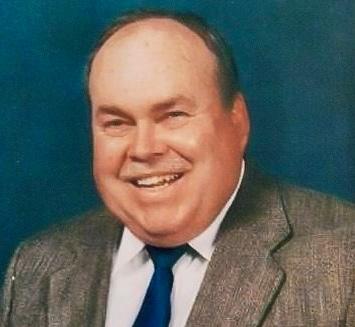
John Steven Franz ’70, age 74, died April 2. (Science)
Kenneth W. French Jr., age 80, died Feb. 17. (Faculty)
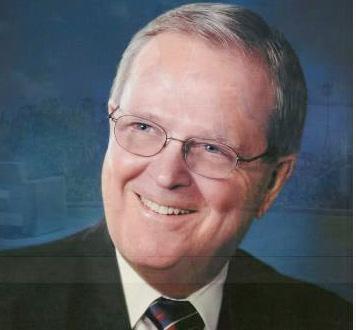

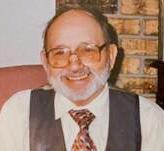


Robert “Bobby” Norman Gordon Jr. ’72, age 72, died Dec. 4. (Building Const.)
Melanie Elaine Hawthorne ’76, age 68, died Jan. 2. (Medical Technology)
Martha Vines Henderson, age 84, died Dec. 20.

Karen Hucks ’86, age 57, died Jan. 17. (Office Administration)
Suzanne Kanis, age 84, died Oct. 19.

Allen Wayne Kimbrough ’75, age 69, died Oct. 17. (Undeclared)
Christina Viola Ruiz-Klein ’89, age 56, died June 2. (Elementary Education)
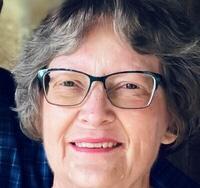

Vonda Kay Matheny, age 56, died Nov. 14.

Thomas Richard Medlock, age 82, died March 15.

John Leslie McBride ’68, age 79, died March 26. (Music)
Wilbur Rankin ’62, age 83, died March 23. (Engineering)
Becci Rothfuss, age 58, died April 20. (Faculty & Staff)

Louis Marion Scarbrough ’54, age 92, died Dec. 7. (Broadcasting)
Helen Wilson Seal ’47, age 98, died Feb. 3. (Social Studies)
Mary Ellen Shaw ’47, age 102, died Feb. 28. (English)
Donald H. Silvis ’55, age 88, died March 15. (Christian Education)
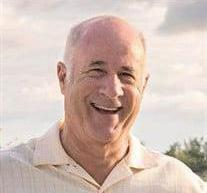
Tylen Lee Turman ’16, age 43, died Nov. 4. (Business Administration)
John Edgar Veteto ’68, age 76, died March 11. (Building Construction & Design)
Margaret Louverta Walton Siemens Weathers ’47, age 97, died Nov. 22. (English)
Steven James Welch, age 64, died Oct. 13.
Constance Louise Shacklette Wood ’59, age 86, died Nov. 24. (Broadcasting)
To read online obituaries, go to jbu.edu/bulletin/obit.












